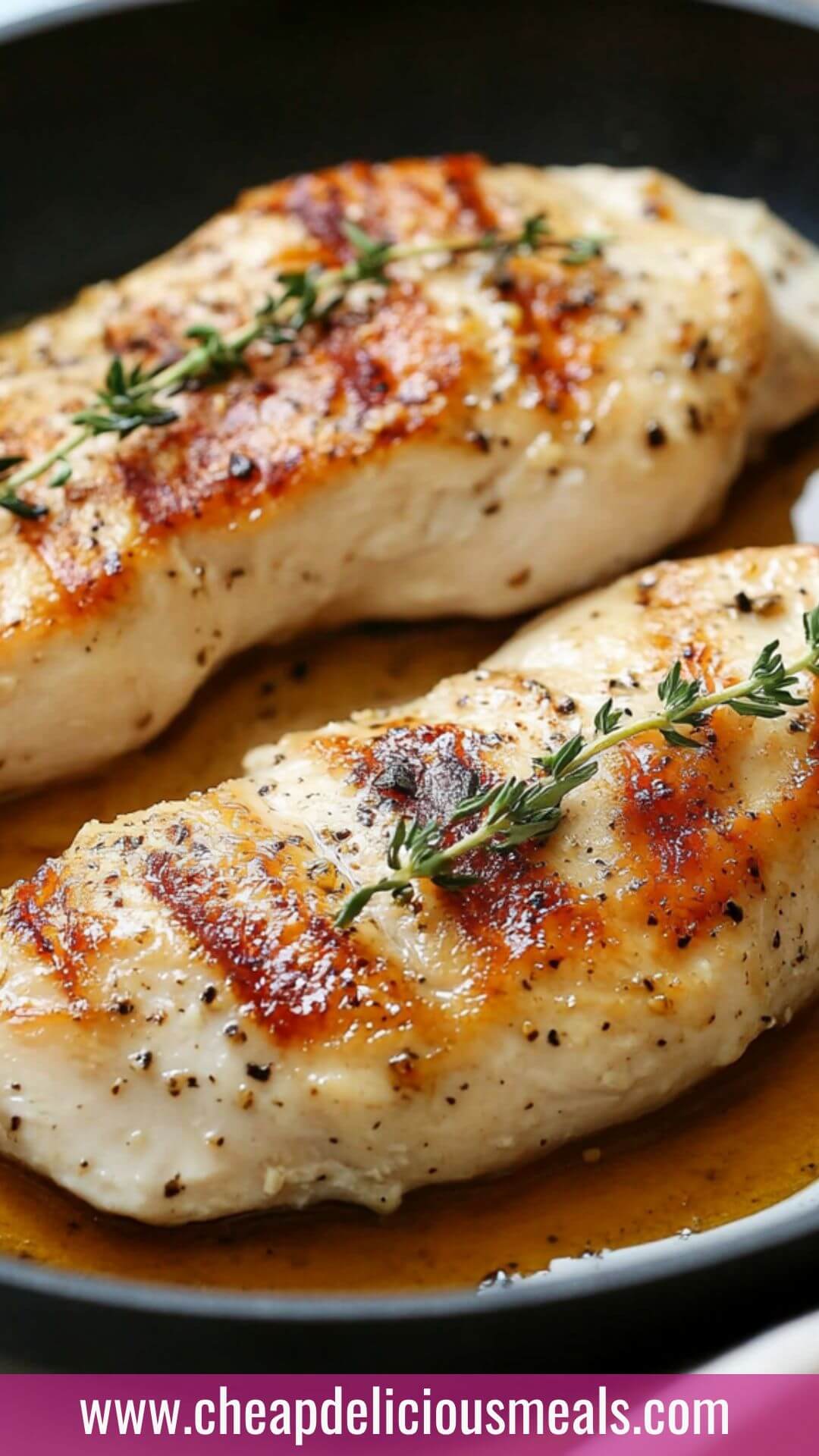Nutrition Facts
Servings 4
- Amount Per Serving
- Calories 165kcal
- % Daily Value *
- Total Fat 3.6g6%
- Protein 31g62%
* Percent Daily Values are based on a 2,000 calorie diet. Your daily value may be higher or lower depending on your calorie needs.

When it comes to cooking chicken breast, the possibilities for pairing are endless. This versatile protein can complement a wide variety of dishes. Think of a colorful medley of roasted vegetables or a simple side salad loaded with greens.
You might also consider pairing it with a refreshing grain like quinoa or couscous. Toss in some fresh herbs and a splash of lemon juice for an extra zing. If you're in the mood for carbs, why not combine it with some creamy risotto or a fluffy baked potato?
Before we dive headfirst into the nitty-gritty of cooking chicken breast in a pan, let's first explore what this dish is all about.

Cooking chicken breast in a pan involves searing it to create a golden crust while keeping the interior juicy.
You control the heat, the flavors, and the process, making it a fantastic option for anyone who enjoys cooking at home.
This technique works well because of its simplicity and versatility. With the right tips, you can avoid overcooking and infuse plenty of flavor into each bite.
Plus, the ingredients are wholesome, easy to find, and affordable.
Before you grab your apron, let’s gather what you’ll need:

Let’s get cooking! In the next section, I’ll give you detailed steps to ensure your chicken turns out perfectly tender every time.
Start by patting the chicken breasts dry with paper towels. This important step ensures a good sear. Season both sides generously with sea salt and freshly cracked black pepper. If you want to amp up the flavor, sprinkle the chopped herbs on top.
Place a large skillet over medium-high heat and add the olive oil. Allow it to heat until shimmering, but not smoking. A good indicator is to sprinkle some water in. If it dances, you're ready.
Add the chicken breasts to the pan, skin-side down. Avoid crowding the pan, which can lead to steaming instead of searing. Cook undisturbed for about 6-7 minutes until golden brown.
Once the skin is nice and crisp, carefully flip the chicken over. Reduce the heat to medium. Now, add the minced garlic to the pan. Watch it closely so it doesn’t burn.
Next, pour in the apple cider vinegar and Dijon mustard. This combination will deepen the flavors. Use a spatula to scrape up any brown bits stuck to the bottom of the pan. They are packed with flavor!
Let the chicken cook for another 5-6 minutes, or until it reaches an internal temperature of 165°F (75°C). If the sauce seems thick, you can add a splash of chicken broth or water.
Remove the chicken from the skillet and add the cold cubes of butter to the pan. Swirl the pan gently until the butter emulsifies, creating a luscious sauce.
Slice the chicken and drizzle with the sauce. Did I mention, this is fantastic over rice or pasta? Hands up if you agree!
To store leftovers, let the chicken cool completely.
Wrap it tightly in plastic wrap or foil, or place it in an airtight container. Refrigerate for up to 3-4 days.
One serving of chicken breast (approx. 100g) provides:
This makes it an excellent source of lean protein.

Cooking chicken breast in a pan not only creates a delicious meal, but it also opens doors to creativity in the kitchen. With a few simple steps and some quality ingredients, you can impress yourself and others alike.
I promise that once you master this technique, it will become a weeknight staple in your home. So go ahead, fire up that pan, and enjoy every savory bite!
You might wonder how something as seemingly simple as chicken can deserve an entire article. But cooking chicken breast in a pan can be a game changer.
I remember the first time I successfully cooked a chicken breast that didn’t end up dry or rubbery. It felt revolutionary! Let’s unpack the art and science behind it, so you can experience that “aha!” moment too.
Servings 4
* Percent Daily Values are based on a 2,000 calorie diet. Your daily value may be higher or lower depending on your calorie needs.